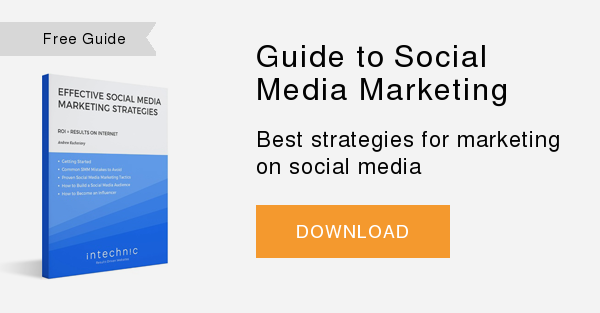How to Find Your Target Audience on Social Media
 Picture a hot dog salesman in the middle of a forest. Regardless of how loudly he shouts or how delicious his hot dogs smell, odds are he isn't going to sell many. After all, his audience is limited and comprised mainly of vegetarians—perhaps a few rabbits and the occasional deer. Just as a hot dog vendor will struggle to draw attention to his product in a forest, your online content won't have any impact unless it is pitched to an appropriate audience, regardless of how persuasive or engaging it is. If you want to pull in consumers, you need to find out who they are and go where they are. Identify your Target Audience Before you can seek out your audience, you must identify them. Are your typical customers male or female? Are they young or old? How much money do they make? What are some of their likes and dislikes? Are they local to you, or do they live all over the world? Are they a certain ethnicity, or do they come from a wide range of ethnic backgrounds? Once you have a clear picture of who your ideal customers are, you can use this information to determine where they hang out online. Teenagers, for instance, tend to congregate on platforms such as Facebook and Twitter, while professionals over the age of 35 make up the majority of LinkedIn users. If you're targeting middle aged suburban men, don't invest all your efforts on Instagram—studies show that the majority of Instagram users are women from urban areas. To figure out where your particular target demographic resides online, do a bit of investigating. There have been countless studies and articles published on the demographics of social media users, and most are easily unearthed through a quick Google search. The publications of organizations such as PewResearch and Business Insider are good places to start. Another tactic you might take is to look to your direct competitors—which social media platforms do they favor? Odds are, if they've found success on certain platforms, you will, too. Find Your Audience on Facebook Facebook looms large as the most commonly frequented social media platform, drawing in over 71% of American adults, according to PewResearch. Happily, finding your way to potential customers on Facebook is fairly straightforward. Say you own a scrapbook shop in Massachusetts. Type the phrase “people who like scrapbooking in Massachusetts” into Facebook's graph search, and you'll receive a list of more than 1,000 Facebook users in your area that are interested in scrapbooking. You can even further filter results by gender, current city, and additional interests. Find Your Audience on Twitter Twitter—the second most commonly used platform—equips users with a similar search tool. Its advanced search function allows you to find potential customers based on what they are tweeting as well as the time and location they are tweeting it. There are also a variety of external tools available which enable you to search for keywords found in Twitter user bios. FollowerWonk, for example, searches for common words and themes in bios, while Twiangulate uncovers matches in both bios and usernames. You can also check out sites like Just Tweet It, which features a directory of Twitter users organized by interest. Find Your Audience on LinkedIn With LinkedIn's people search function, you can narrow keyword search results down by useful criteria such as postal code, industry, and nonprofit interests. You can also sift through LinkedIn's millions of groups to find ones that match your industry, and check out groups' profiles to see their size and activity level. After requesting and receiving permission to join groups, you'll be able to post to their discussion boards and browse member lists for prospective customers.
Picture a hot dog salesman in the middle of a forest. Regardless of how loudly he shouts or how delicious his hot dogs smell, odds are he isn't going to sell many. After all, his audience is limited and comprised mainly of vegetarians—perhaps a few rabbits and the occasional deer. Just as a hot dog vendor will struggle to draw attention to his product in a forest, your online content won't have any impact unless it is pitched to an appropriate audience, regardless of how persuasive or engaging it is. If you want to pull in consumers, you need to find out who they are and go where they are. Identify your Target Audience Before you can seek out your audience, you must identify them. Are your typical customers male or female? Are they young or old? How much money do they make? What are some of their likes and dislikes? Are they local to you, or do they live all over the world? Are they a certain ethnicity, or do they come from a wide range of ethnic backgrounds? Once you have a clear picture of who your ideal customers are, you can use this information to determine where they hang out online. Teenagers, for instance, tend to congregate on platforms such as Facebook and Twitter, while professionals over the age of 35 make up the majority of LinkedIn users. If you're targeting middle aged suburban men, don't invest all your efforts on Instagram—studies show that the majority of Instagram users are women from urban areas. To figure out where your particular target demographic resides online, do a bit of investigating. There have been countless studies and articles published on the demographics of social media users, and most are easily unearthed through a quick Google search. The publications of organizations such as PewResearch and Business Insider are good places to start. Another tactic you might take is to look to your direct competitors—which social media platforms do they favor? Odds are, if they've found success on certain platforms, you will, too. Find Your Audience on Facebook Facebook looms large as the most commonly frequented social media platform, drawing in over 71% of American adults, according to PewResearch. Happily, finding your way to potential customers on Facebook is fairly straightforward. Say you own a scrapbook shop in Massachusetts. Type the phrase “people who like scrapbooking in Massachusetts” into Facebook's graph search, and you'll receive a list of more than 1,000 Facebook users in your area that are interested in scrapbooking. You can even further filter results by gender, current city, and additional interests. Find Your Audience on Twitter Twitter—the second most commonly used platform—equips users with a similar search tool. Its advanced search function allows you to find potential customers based on what they are tweeting as well as the time and location they are tweeting it. There are also a variety of external tools available which enable you to search for keywords found in Twitter user bios. FollowerWonk, for example, searches for common words and themes in bios, while Twiangulate uncovers matches in both bios and usernames. You can also check out sites like Just Tweet It, which features a directory of Twitter users organized by interest. Find Your Audience on LinkedIn With LinkedIn's people search function, you can narrow keyword search results down by useful criteria such as postal code, industry, and nonprofit interests. You can also sift through LinkedIn's millions of groups to find ones that match your industry, and check out groups' profiles to see their size and activity level. After requesting and receiving permission to join groups, you'll be able to post to their discussion boards and browse member lists for prospective customers.
Find Your Audience Outside of Social Media Giants But your audience doesn't reside exclusively within the realms of social media giants like Facebook and Twitter. A Google search can unveil countless independent online communities populated by people interested in your industry and product. From antique fanatics in Michigan to Ethiopian food buffs in the San Francisco Bay area, your customers can also be found chitchatting away in specialty chat rooms, posting on local blogs, and posing questions to special interest forums.









